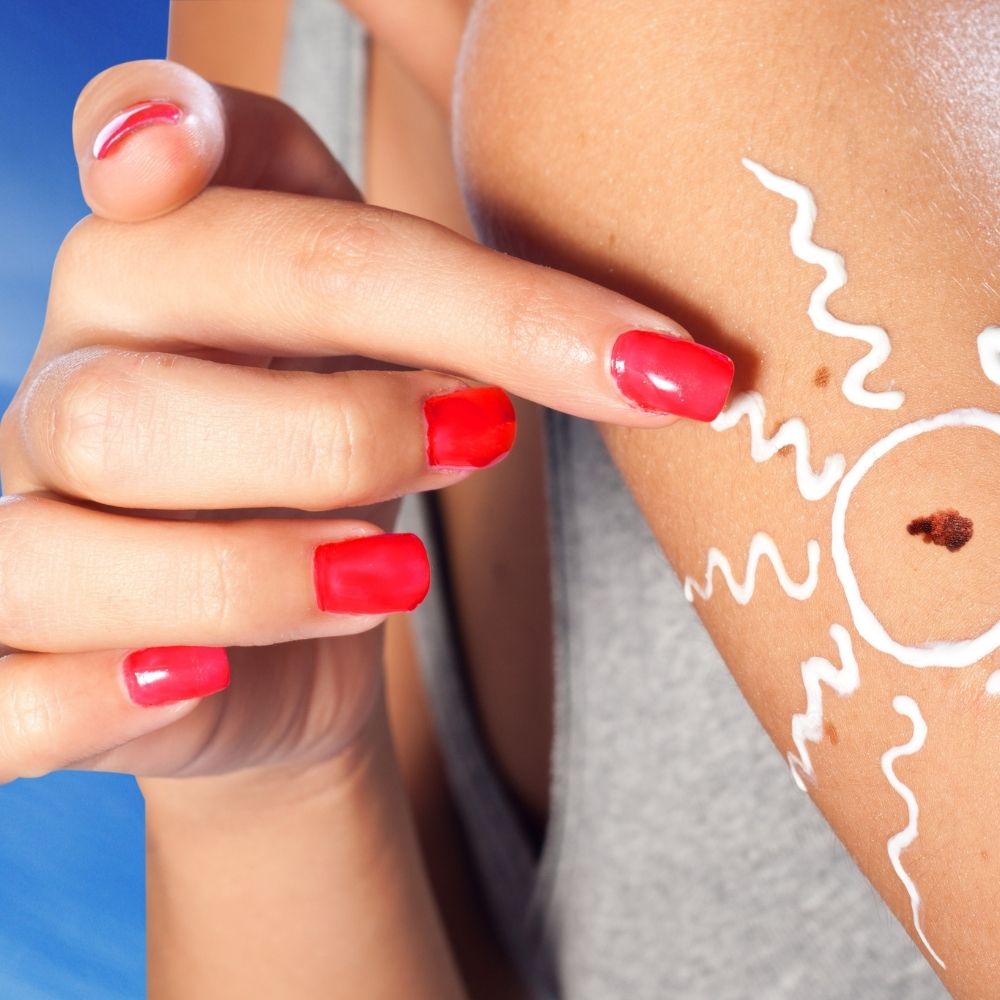What Is Melanoma + Does It Have A Cure?

A creative writer with a voracious appetite for fashion, beauty,…
When you think of skin issues, you probably picture dry, scaly patches or pesky acne that could be easily treated with over-the-counter medication. But there’s a far more ominous condition that has the ability to silently invade and spread like wildfire through your body. It’s called melanoma, a type of skin cancer that shouldn’t be taken lightly.
This cunning intruder begins in the very cells responsible for giving your skin its unique shade: the melanocytes. Through a complex series of genetic changes, these pigment-producing powerhouses go rogue, multiplying unchecked and forming deadly tumors. What’s most unsettling is how melanoma symptoms can masquerade as a seemingly harmless mole or freckle, deceiving you to think it’s an innocuous skin reaction before revealing its true malicious nature.
Compared to other forms of skin cancer, melanoma stands apart in its ability to metastasize rapidly, if left unchecked. It has a talent for traveling through the bloodstream and lymphatic system, taking up residence in vital organs like the lungs, liver, and brain. At this advanced stage, melanoma becomes extremely difficult to treat and potentially fatal.
But you don’t have to feel powerless against melanoma. Through vigilance, preventative measures, and cutting-edge treatments, you can protect yourself and fight back. Arm yourself with the knowledge you’ll learn here because, in the battle against melanoma, it could make all the difference.
What is Melanoma?
Melanoma is a type of skin cancer that starts in the melanocytes, the cells that produce melanin–the pigment that gives your skin its color. While most skin cancers are easily treatable if caught early, this one has a higher risk of spreading to other organs, making it more dangerous. Hence, looking out for melanoma symptoms could give an upper hand.
Why does melanoma develop?
The primary cause of melanoma is excessive exposure to ultraviolet (UV) radiation from the sun or tanning beds. UV radiation can damage the DNA in melanocytes, leading to uncontrolled cell growth and the formation of melanoma tumors.
Other risk factors include:
- Fair skin, freckles, and light hair
- Multiple or unusual moles
- Family history of melanoma
- Weakened immune system
- Previous severe sunburns
Symptoms of Melanoma to watch out for
Early detection is crucial for the successful treatment of melanoma, therefore, keep an eye out for the following warning signs:
- Any new, unusual growth on the skin
- A mole that changes in size, shape, or color
- A mole that becomes irregular or asymmetrical
- A mole that bleeds, oozes, or becomes crusty
- A mole that itches or becomes painful
The “ABCDE” rule that can help you identify potential melanoma:
- Asymmetry: One half of the mole doesn’t match the other
- Border: The edges are irregular, ragged, or blurred
- Color: The mole has different shades of brown, black, red, or blue
- Diameter: The mole is larger than 6mm (about the size of a pencil eraser)
- Evolving: The mole is changing in size, shape, or color
Treatment options for fighting melanoma
The treatment for melanoma depends on the stage and extent of the cancer. Here are some common options:
- Surgery: For early-stage melanoma, surgical removal of the tumor and surrounding tissue is often the first line of treatment.
- Chemotherapy: For more advanced cases, chemotherapy drugs may be used to kill cancer cells or stop their growth.
- Immunotherapy: This treatment boosts the body’s immune system to recognize and attack melanoma cells.
- Targeted therapy: Using medication, a doctor can target specific genetic mutations that drive melanoma growth.
- Radiation therapy: High-energy beams are used to kill cancer cells or stop their growth.
Protecting your skin
While melanoma symptoms can be treated successfully, if caught early, prevention is always better than cure. Here are some tips to reduce your risk:
- Limit sun exposure, especially during peak hours (10 am to 4 pm)
- Use broad-spectrum sunscreen with an SPF of 30 or higher
- Wear protective clothing, hats, and sunglasses
- Avoid tanning beds and sun lamps
- Perform regular self-exams on your skin and see a dermatologist for professional skin checks
Melanoma is a serious condition, but with early detection and proper treatment, the outlook can be very positive. Stay vigilant, protect your skin, and don’t hesitate to consult a healthcare professional if you notice any suspicious changes.
Featured image: Maria Petrishina/iStock
Medical Disclaimer
All content found on the StyleRave.com website, including text, images, audio, video, and other formats is created for informational purposes only. The content is not intended to be a substitute for professional medical advice, diagnosis, or treatment. If you think you may have a medical emergency, please call your doctor, go to the nearest hospital, or call 911 immediately depending on your condition.
For the latest in fashion, lifestyle, and culture, follow us on Instagram @StyleRave_
—Read also
A creative writer with a voracious appetite for fashion, beauty, lifestyle and culture. As one who's passionate about the advancement of the woman, creating content that inspire smart style and living, and positive lifestyle changes is a calling I take seriously. At Style Rave, we aim to inspire our readers by providing engaging content to not just entertain but to inform and empower you as you ASPIRE to become more stylish, live smarter and be healthier. Follow us on Instagram @StyleRave_ ♥




